Optimize NetSuite Procure-to-Pay Workflows with AP Automation

Oracle NetSuite customers can now optimize their procure-to-pay (P2P) workflows with AP automation that seamlessly integrates with their ERP. AP to ERP integration lets businesses process transactions from requisition to payment in far less time and with more precision, transparency, and control. AP automation revolutionizes P2P processes for both on-premise and SaaS versions of NetSuite.
Businesses that don’t take full advantage of technology to automate accounts payable face many challenges, like poor communication between stakeholders and vendors, higher invoice and payment error rates, slow approvals, and frustrated vendors. Using an AP platform such as Stampli to automate and integrate P2P processes speeds up invoice processing and verification, reduces errors and fraud, speeds up approvals and bill payments to vendors, and makes collaboration and communication simple for all stakeholders.
Read on to learn more about how AP automation can help you build an efficient NetSuite P2P workflow.
Benefits of AP Automation
Your business may already use NetSuite or another ERP to automate parts of your P2P cycle. Stampli’s seamless pre-built integration with NetSuite helps you fully leverage your ERP and AP automation functionality to:
- Streamline and optimize purchasing and accounts payable workflows
- Speed up invoice and payment processing
- Improve internal controls and transparency
- Simplify your procurement process
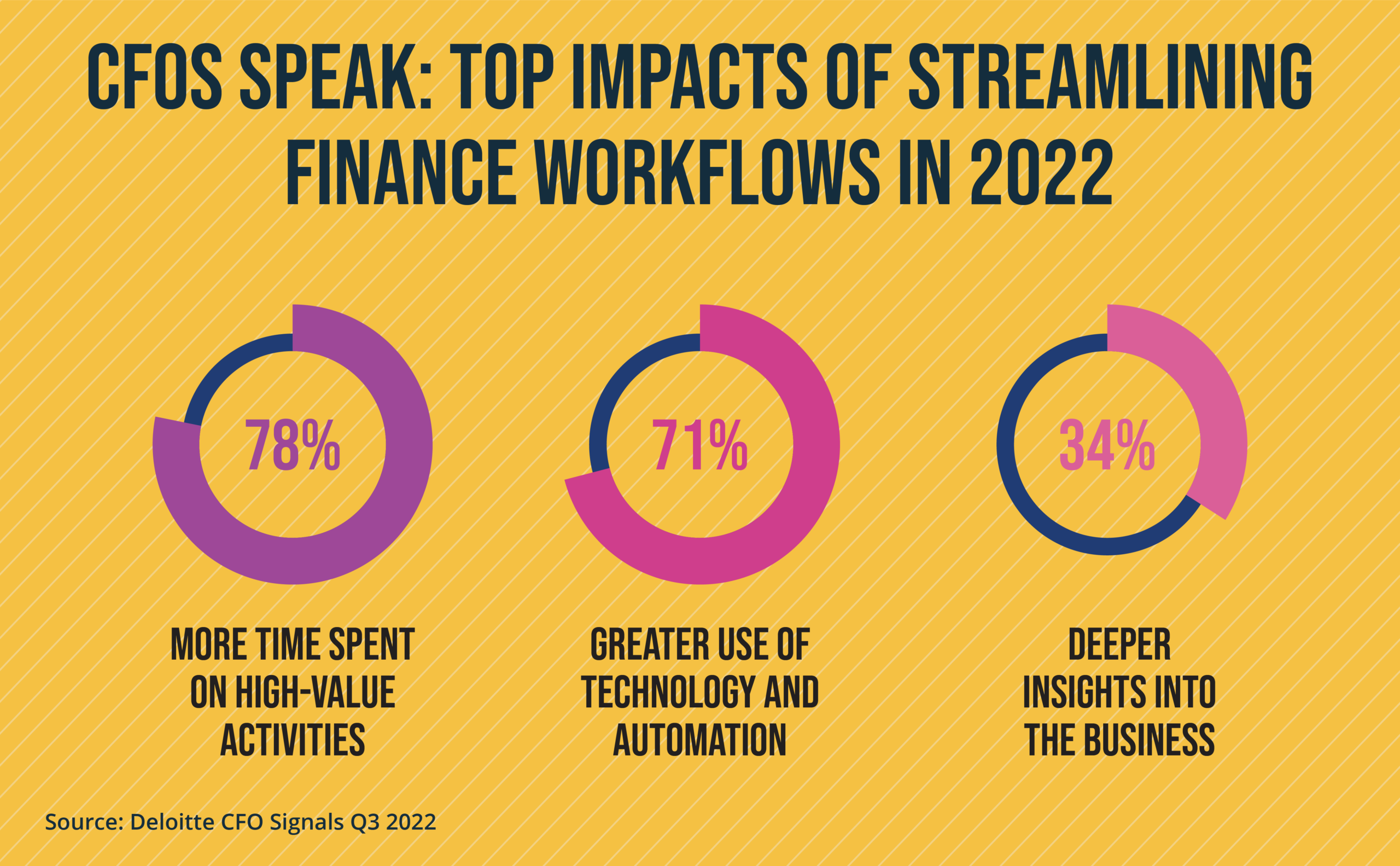
In this podcast, Wayne Kimber, CFO of SymphonyAI, and Ben Murray, Founder of The SaaS CFO, discuss how truly successful CFOs embrace digitization and automation to develop people and technology and to grow their businesses. Accounts payable automation is the most effective way for NetSuite customers to manage P2P workflows, allow the business to spend more time on high-value, strategic tasks, and gain deeper insights into their business.
Let’s look at how AP automation optimizes the steps of the P2P workflow.
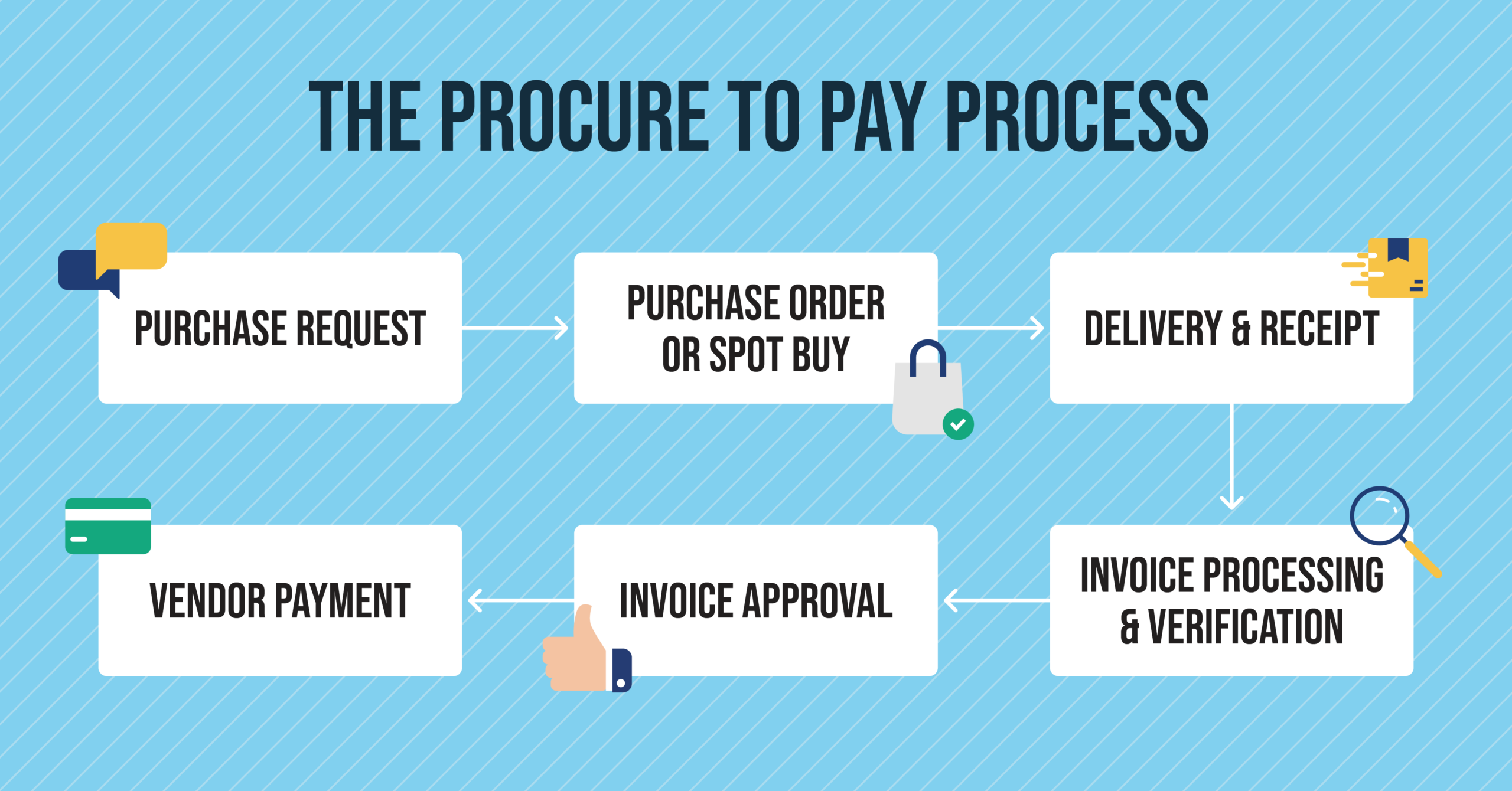
The P2P Workflow
The P2P workflow includes the steps from requisitioning a good or service to vendor payment. Individual stages of the P2P workflow may already be automated, but still need to be fully integrated with other processes or an ERP. Lack of automation and integration across the P2P process can lead to miscommunication, siloed information, and bogged-down tasks, which slow down the entire process and cost the organization time and money.
Here are the six core steps of the P2P workflow and how you can optimize them with AP automation and integration with NetSuite ERP:
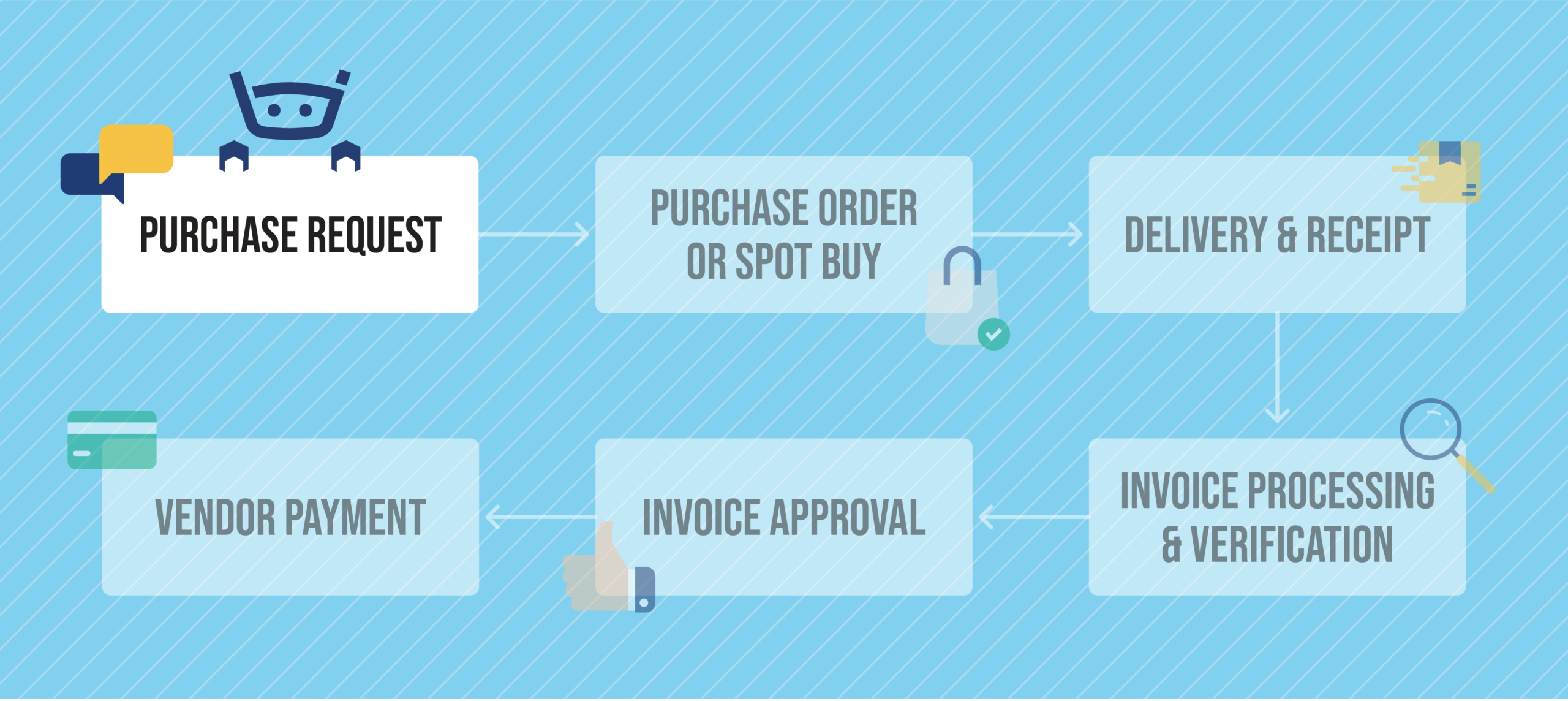
Step 1: Purchase Request
The first step of the purchasing process is identifying the need for a good or service and issuing a requisition. These tasks usually fall to the procurement department, and the amount of documentation required depends on the total cost of the item.
The procurement team creates a spec sheet, terms of reference, or scope of work (SOW) outlining the required goods or services for larger purchases. The procurement team will assess vendor pricing, discounts, and terms during this process to select the appropriate vendor. Once Procurement finalizes terms with the vendor, a formal purchase requisition (or purchase order) is created and sent for approval.
How AP Automation Optimizes Requisitions
An AP automation platform that manages vendor information and communications can streamline the requisition process by making up-to-date vendor pricing and terms available and by simplifying vendor communications. Procurement teams can access vendor information and updated scorecards without searching through purchasing contracts, old invoices, or emails, which makes vendor selection more efficient.
Advanced Vendor Management with Stampli
Stampli’s Advanced Vendor Management solution automatically keeps vendor records and documents updated and synced with NetSuite ERP. The solution simplifies onboarding new vendors by collecting and syncing payment information, W9s, licenses, bank account details, and insurance – ensuring that your vendor records and NetSuite data is always up-to-date. Advanced Vendor Management improves vendor relationships across the supply chain by simplifying communications and reducing delays and errors.
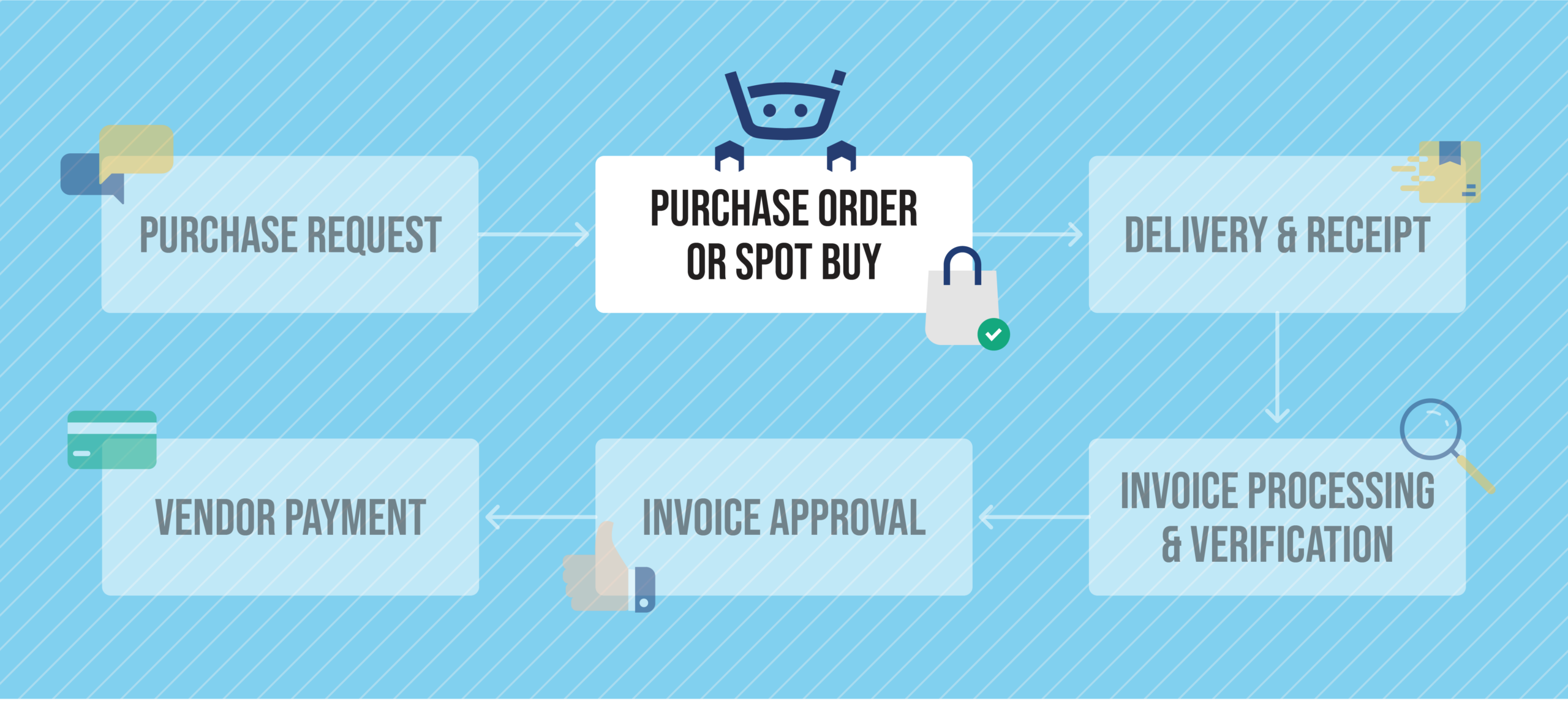
Step 2: Purchase Order or Spot Buy
When the requisition is approved, Procurement creates a purchase order which is then approved and sent to the vendor. In some cases, Procurement may use a spot buy, such as a one-time unique or low-value purchase. The procurement department logs and records the purchase after sending it to the vendor.
How AP Automation Optimizes the Purchase Order Process
After a purchase order is created, the NetSuite ERP data will automatically sync with Stampli’s AP automation platform. Doing this ensures that a Stampli digital version of the purchase order is available to the AP department for 3-way matching, which is vital for invoice verification and measuring vendor performance.
Accurate, Real-Time Transaction Data with Stampli & NetSuite
Purchase orders include live data that is constantly changing. Stampli auto-syncs PO, receiving, and vendor data with NetSuite ERP in real time, so the information is available across the organization.
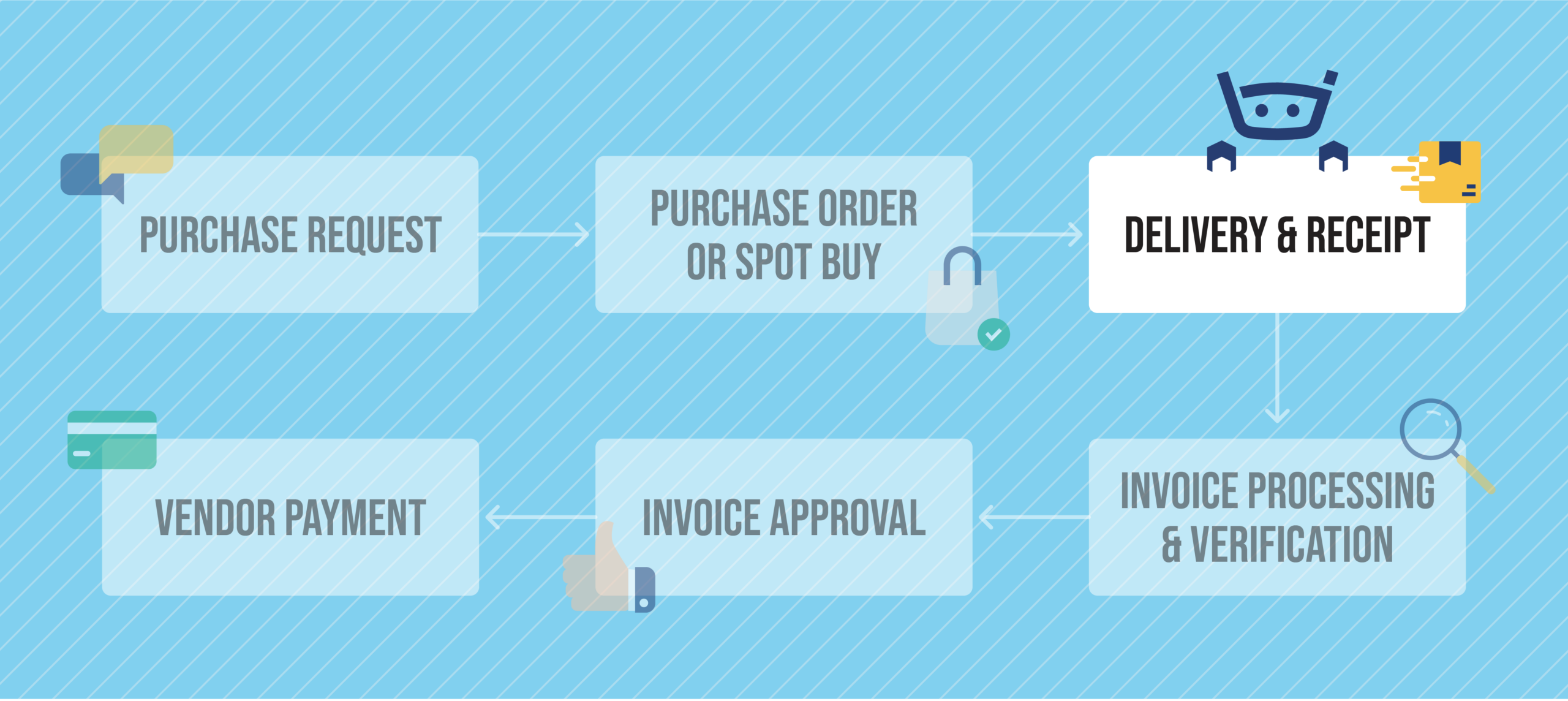
Step 3: Delivery & Vendor Receipt
When the supplier delivers goods, the buyer inspects the delivery to ensure it complies with the purchase order and contract terms. If services are provided, the purchaser confirms that the services match the purchase order and contract terms. At this point, the vendor’s receipt is either approved or rejected.
How AP Automation Optimizes the Delivery & Receipt Process
Paper receipts can easily get lost or misdirected, causing delays and making it difficult to verify deliveries. AP automation platforms with optical character recognition (OCR) automatically scan, code, and digitize paper receipts and vendor bills, so they are stored in a central location.
Capture Transaction Documents with Stampli
Stampli uses advanced OCR, machine learning, and AI to capture transaction data from paper and email documents, such as item receipts, in real time. The platform learns your business process for accurate coding, allows employees to scan and upload documents from mobile devices, and lets vendors upload documents directly to the vendor portal. Stampli auto-syncs all transaction data with NetSuite in real-time to ensure everyone is working from the same data.
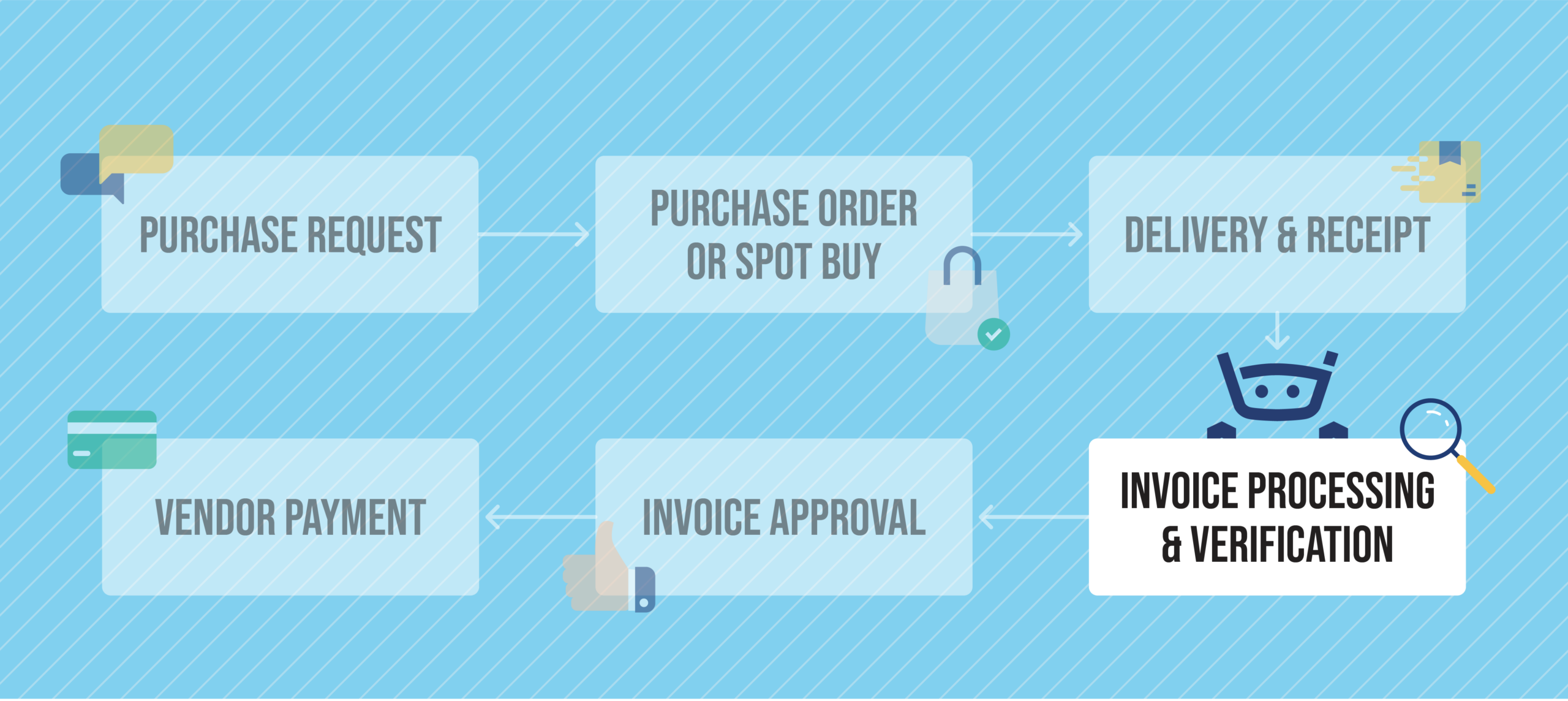
Step 4: Invoice Processing & Verification
When the vendor invoice arrives, the AP team keys it in, codes it, and performs two or three-way matching to verify that the invoice, purchase order, and receipt match. If AP finds any discrepancies, they reject the invoice and follow up with the vendor. If they don’t see any errors, they forward the invoice for approval and payment.
How AP Automation Optimizes Invoice Processing & Verification
AP automation streamlines the entire invoice processing and verification workflow to improve efficiency and reduce errors. The AP system uses OCR to scan and digitize paper invoices, and vendors can send email invoices to a central email address. Next, the platform GL codes the invoices and performs 2 or 3-way matching.
If the system finds a discrepancy, it flags the error and alerts the AP team. If there are no errors, the system automatically forwards the invoice for approval. Invoice data is automatically synced with NetSuite in real time, ensuring that the entire organization has up-to-date information.
Flexible and Powerful Invoice Processing with Stampli
With Stampli, you can code invoices faster. Stampli supports all line types, including items, general ledger, charges, resources, and syncs tax data and custom fields. The platform can also manage partial payment workflows, multiple subsidiaries, locations, currencies and supports invoices based on multiple POs or receipts.
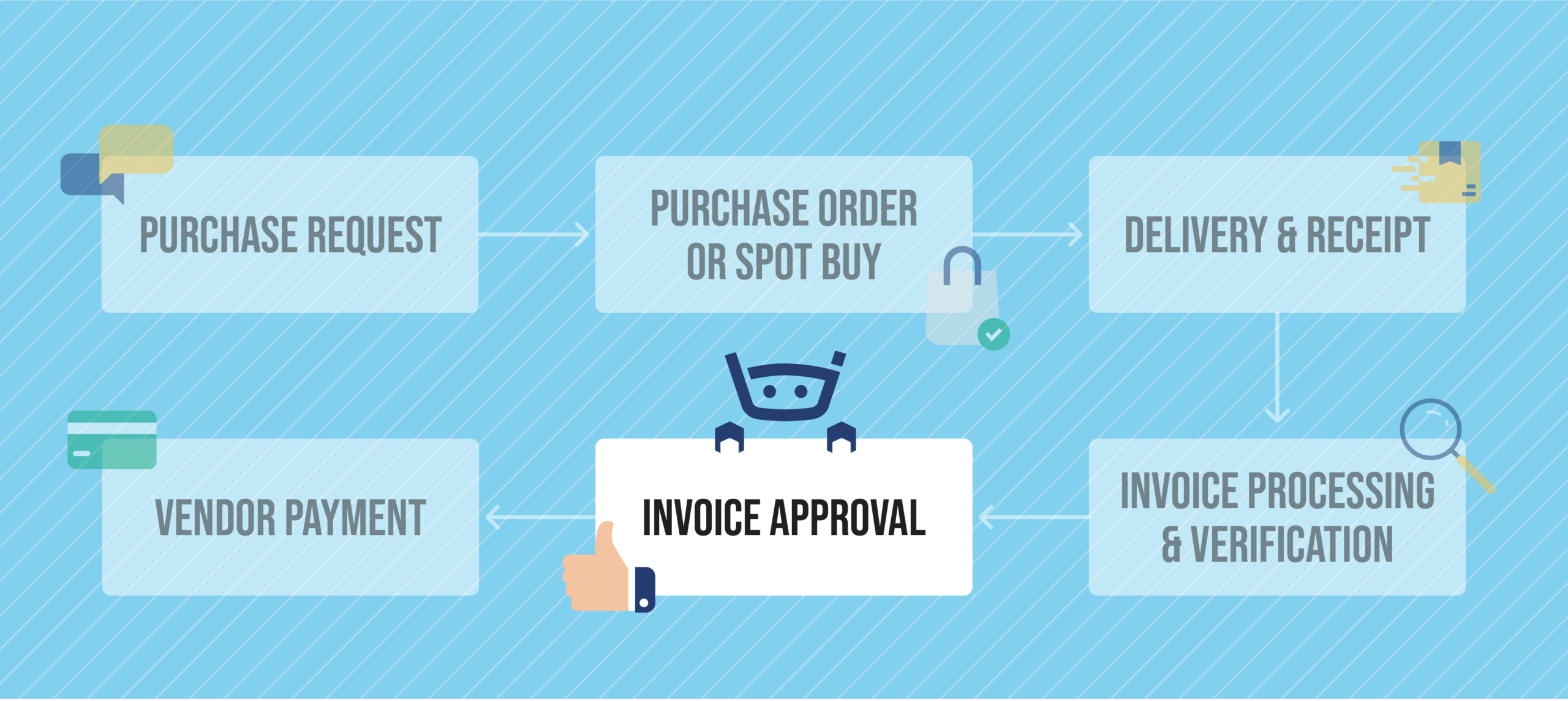
Step 5: Invoice Approval
Once the invoice is processed and verified, AP sends it for approval. In manual processes, this usually involves delivering a paper file or email to the approver, who then reviews the transaction, approves it for payment, or rejects it and returns it for review.
How AP Automation Improves Invoice Approvals
Manual invoice approval processes are slow and inefficient. Emails can be misplaced, approvers need to remember to approve transactions, and paper can get lost. AP automation improves the approval process by centralizing the transaction data and communications on one platform and automatically sending invoices to approvers for approval. The platform can send reminders if an approver doesn’t check an invoice within a specified time. When an invoice is approved, the AP system automatically forwards it to NetSuite or a payment platform for payment.

Optimize Invoice Approvals with Stampli
Stampli streamlines the invoice approval process for NetSuite by centering all communications on the invoice itself. When AP sends the invoice for approval, the approver can review all the relevant information and ask questions in the Stampli dashboard. Stampli also supports multi-approver and partial payment approval workflows and syncs approval status and data with NetSuite in real time.
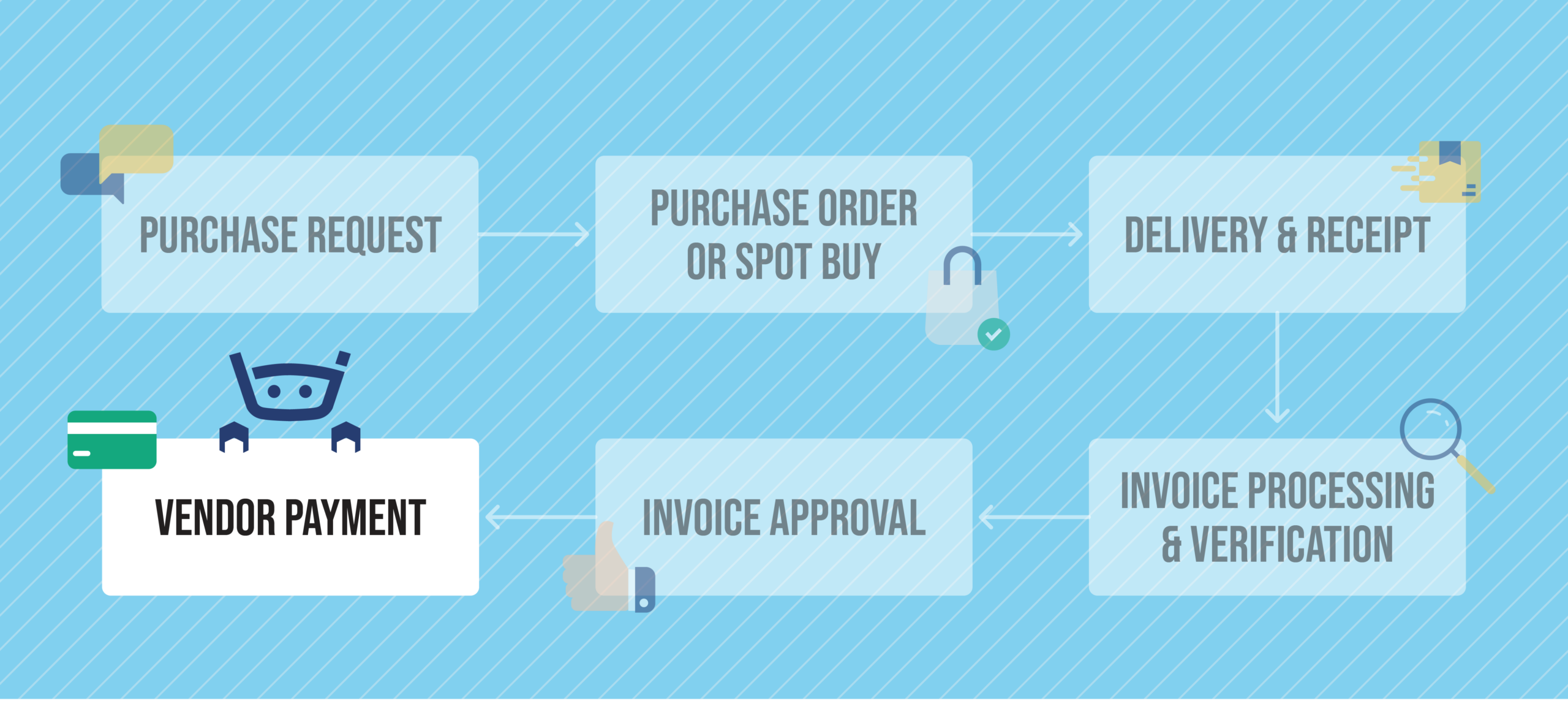
Step 6: Vendor Payment
After the invoice is approved, it’s forwarded to the finance team for payment. The finance team processes the payment according to the contract terms with the vendor. Payments fall into one of four categories: advance, partial, installment, or final. The finance team issues the actual payment through various channels, depending on the payment type – for example, they may cut a paper check, send an electronic payment such as ACH, or pay with a credit card.
How AP Automation Simplifies Payments
Many companies are transitioning to digital payment methods. Digital payment processes are more efficient and less error-prone than manual processes. AP platforms provide more control and flexibility over payments by centralizing payment methods and synchronizing payments data with NetSuite ERP. Automation also ensures finance teams have access to up-to-date information on payment terms, bank accounts, vendor payment details, and credits and discounts.
Take Control of Payments with Stampli Direct Pay & Stampli Card
Stampli Direct Pay and Stampli Card gives complete control and visibility over payments and corporate credit spend. Stampli Card purchases are automatically synced in NetSuite as a payment receipt, so finance teams can manage all card transactions, purchases, and invoices in one place. With Stampli Card and Direct Pay, each payment approval is based on your defined approval process to ensure the right approvers sign off. Vendor invoices are paid instantly with Stampli Card or through check or ACH payment.
Don’t Just Manage Your Procure-to-Pay Process; Control It
Stampli’s end-to-end AP platform is the industry-leading AP automation solution for NetSuite ERP. Stampli gives you full control and transparency over your corporate spending from invoices to cards to payments – on a single and flexible platform. Stampli’s platform is Built For NetSuite (BFN) certified and offers an API integration that doesn’t need IT support.
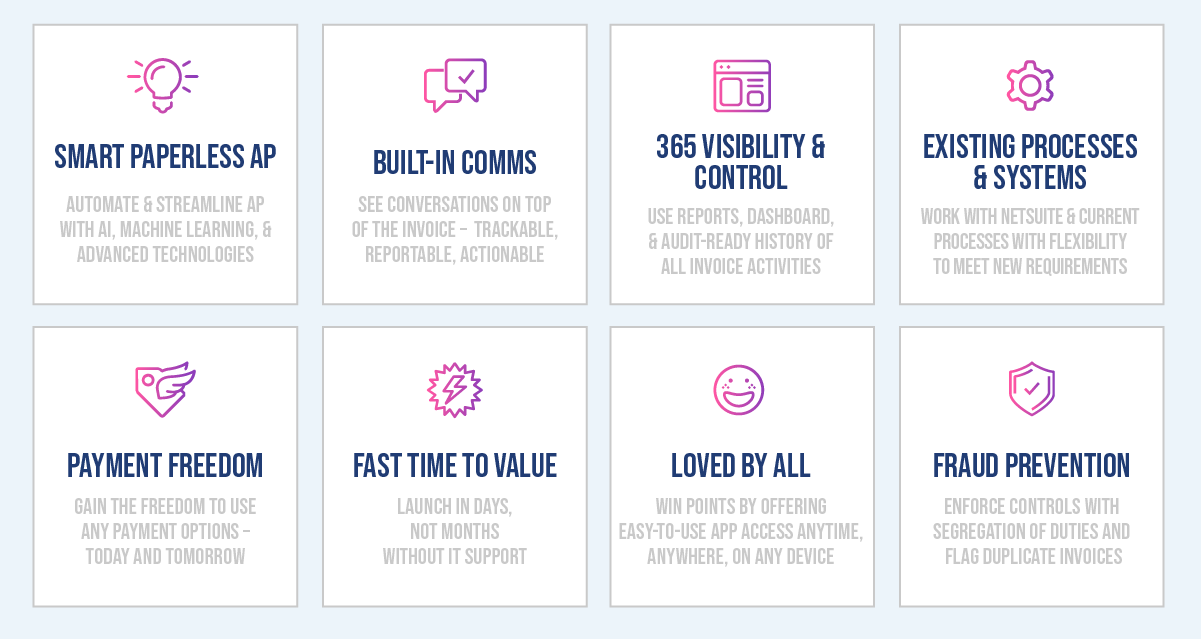
Stampli is the leader in the G2 Grid for AP automation software and has been rated #1 by users for Customer Support, Implementation, and Delivering Results.
Contact Stampli today to optimize your P2P workflows with NetSuite.

